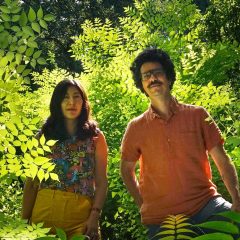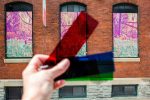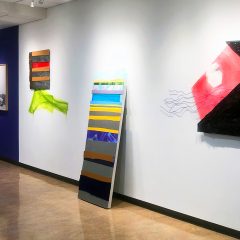Whatever you may think, Miami does not stop at Art Basel. Putting aside the luxury parties, over-the-top shows, and yachts, the city is a gem for contemporary art. As one of the closest US cities to South America and the Caribbean, Miami has some of the best Latin American art collections in the world. With a strong history of design innovation, the city is also a thriving street art hub, the streets constantly changing with new colors, designs, and characters. Year round – Miami is a great place for contemporary art. I visited the city in February for my annual family visit with my brother who lives there.
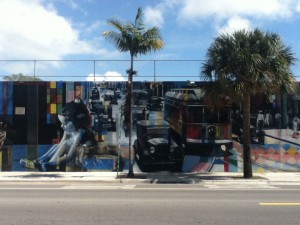
The current spot to be in this town is Wynwood. Philadelphia’s equivalent of Kensington or Port Richmond, Wynwood is complete with old garment houses and massive warehouses, the exterior walls of which are covered in murals, graffiti, wheat pastes, and geometric designs. Artists from all over the world – Brazil, Pakistan, LA — come to the neighborhood to add their mark. Pieces by Ryan McGinness, Stelios Faitakis, and Retna, (among many, many others) are currently on public view, free and outdoors. A day stroll through the neighborhood is a must.
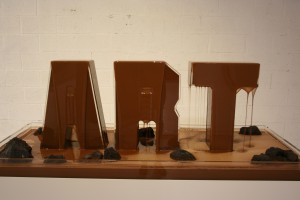
Many galleries, collector museums and design showcases also make their home in Wynwood with more sprouting up each day. The most remarkable is the Margulies Collection at the Warehouse, Martin Margulies’ personal collection of more than 4,500 contemporary works (not all on display at the same time) housed in a 45,000 square foot warehouse. Including video works, photography, sculpture, and installation, Margulies clearly likes his works big. And for the space, they need to be.
Sculptures range from giant Serras and de Koonings to installation pieces from Olafur Eliasson and Simryn Gill. In a collection that large, the curation is spot on. For example, rather than trying to disguise the Warehouse’s aesthetic, rough-hewn works by Los Carpinteros and Sara Ramo seamlessly settle alongside cooling vents and industrial pipes. Both intimate corners and huge open spaces are utilized smartly, creating meaningful experiences with the works.
The Margulies Collection is truly a playground for the contemporary art enthusiast. With a time restraint I was only able to spend two hours in the Warehouse, but could have easily spent an entire day. I also missed out on The Rubell Family Collection, located, like the Marguiles Collection, in a 45,000 square foot Wynwood warehouse. I heard from a reputable source that it is worth an entire afternoon – higher on the list than time in the sun.
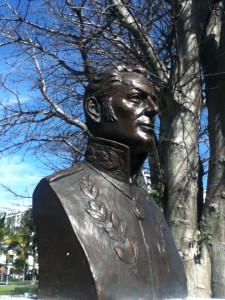
Moving to South Beach, the public art is as bright and exuberant as ever. Space Invader, the Paris-based street artist, has cleverly added his signature tiles across the beach, mixing in with traditional public sculptures such as those dedicated to Simón Bolívar.

If there is one artist that defines Miami though, it is Britto. His neo-pop sculptures spot the beach – embracing the corporate world with outstretched arms. And while Britto’s works certainly mimic Miami’s bright energy and spirit, they do not contribute much else to the dialogue.
Also in South Beach, I visited the Bass Museum of Art, located in the middle of Collins Park. On view was The Endless Renaissance (closed March 17) in which six solo artist projects reconsidered art historical objects and concepts through a contemporary lens.
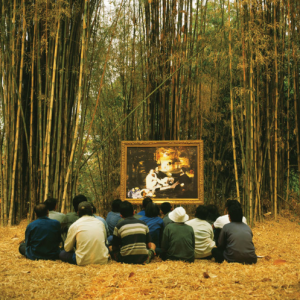
In her films, Thai artist Araya Resdjarm-Rearnsook brings prints of Western masterpieces to Thai villagers and farmers, asking them to comment on and discuss the paintings among each other. Filming from behind while the participants sit and stare at the Van Gogh’s or Seurat’s, the artist captures a phenomenal moment of encounter. The conversation becomes a transnational moment of intersection, where connections are realized and differences made evident. Embedded in the Thai landscape, the films are beautifully shot. The dual settings of Thailand and the individual paintings create a lovely interplay of space, visually transporting the audience into two modes.
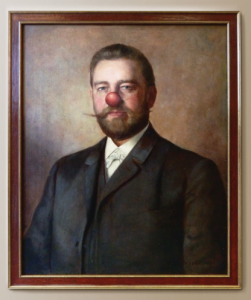
Hans-Peter Feldman’s interpretation of art historical objects will leave any museum-goer grinning. Taking regal and dignified portrait paintings and sculptures, he slightly manipulates their images into brilliant realizations with sly subtleties. A couple’s eyes are crossed, a red nose is painted on a politician, breasts are cleverly covered, and no labels explain why.
He often uses photographic reproduction, though many of the works in the show appeared to be hand-painted. His work is described as using found objects and paintings and tweaking them slightly. As I said, none of his works have labels, so the exact medium/technique is unspecified and mysterious.
With the lighting perfectly dim and shades of emerald and scarlet covering the walls, his curation conveys the feeling of being in the Renaissance wing at the PMA. The work is hilariously spot-on and reflectively curious, poignantly playing with visual expectations.
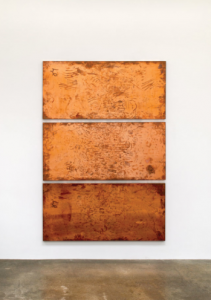
A final standout was works by photographer and sculptor, Walead Beshty. Taking materials inherently knowledgeable of their histories, such as FedEx boxes, he creates monumental minimalist sculptures that carry remnants of travel. In his work Copper Surrogates, three copper panels were instructed to be handled without gloves, allowing fingerprints, smudges and scrapes to compose the panels’ surfaces. The pieces are stunning, reminding us of artworks realities as objects that are boxed, shipped and passed through endless hands. As ephemeral as we may want to believe art to be, these objects often travel as much as we do, — and more roughly.
By the way, there’s a great bookstore on Lincoln Road in South Beach — Books and Books. Located on a strip filled with sushi restaurants and designer boutiques, Books and Books offers the latest fiction bestsellers, art retrospectives, and huge children’s selection. They host 60 author events a month and live music at their outdoor cafe – a nice change of scene from the stereotypical Miami nightlife.
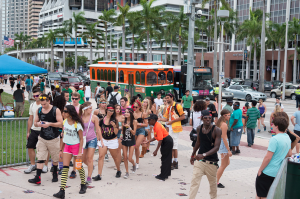
When I went to the Miami Art Museum located downtown, I was disappointed that the permanent collection, with works from the likes of Ana Mendieta, Wilfredo Lam, and Catherine Opie, was closed that day for installation. A small exhibit titled New Work Miami (up to June 2) was on view – a lackluster showing of contemporary works from Miami-based artists presenting in various mediums. One highlight, though, was photographs by Gideon Barnett, who captures deceivingly momentous scenes of Miami life. His large-scale photographs remind me of photography’s unique ability to capture those split-second occurrences of amazingness in the midst of seeming normality. The museum’s next exhibition, Frames of Reference: Latin American Art from the Jorge M. Pérez Collection, looks to be a remarkable show, presenting a brief history of Latin American art with works from Diego Rivera, Roberto Matta, Joaquín Torres-Garcia, among others. This is the last show at their current location before moving to a new space designed by Herzog & de Meuron in December, 2013.
Not seen and very much on my list for a return visit to the city is the Museum of Contemporary Art North Miami (MOCA), which marks its 15th Anniversary this year with an exhibition, Pivot Points: 15 Years and Counting. Another must-see for next time — the de la Cruz Collection, which opens with new works by Alfredo Jarr on March 9th.
Four days in Miami is just never enough.


